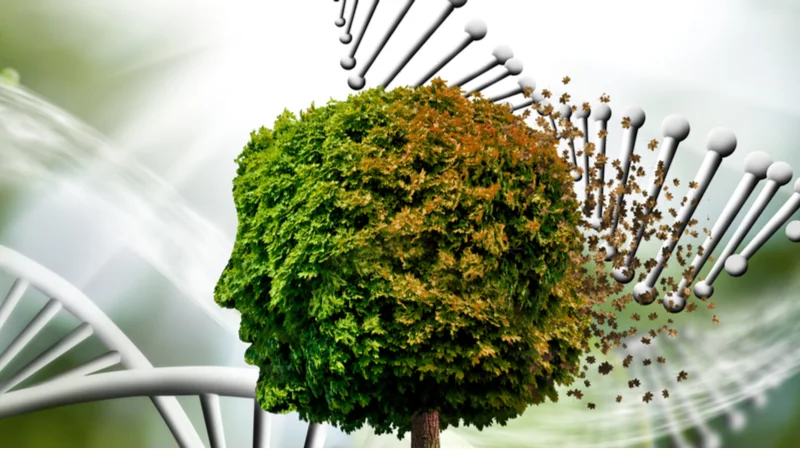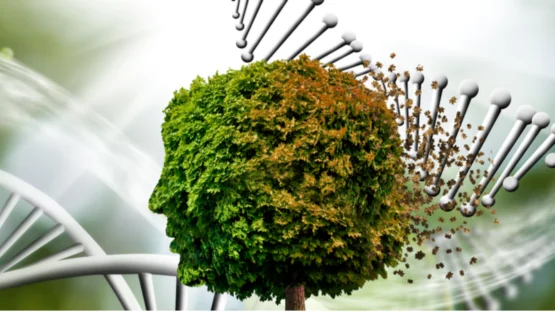In a new study, mice transduced with a longevity-associated variant (LAV) of the BPIFB4 gene showed less immunosenescence and healthier vasculature [1].
The importance of having good genes
Longevity-associated alleles prove that aging does not affect everyone equally. On average, centenarians and supercentenarians are more protected from age-related diseases than other people, and this protection is better explained by their genes than by their lifestyle choices; it’s not for nothing that longevity often runs in the family.
Geroscientists have been studying these genetic differences for years (check out our interview with Nir Barzilai, one of the most prominent researchers in this field) and have found many gene variants associated with extreme longevity in humans. If only we could somehow extend the benefits that these variants provide to the rest of the human population!
As it happens, scientists have been slowly inching towards making this dream a reality. In this new study, a group of researchers transferred a longevity-associated variant (LAV) of the BPIFB4 gene to mice using viral vectors and saw it rejuvenate the animals’ immune systems and vasculature.
The longevity-associated enigma
Due to its association with longevity established by population studies, the BPIFB4 gene has been in geroscientists’ crosshairs for a few years now. The exact mechanism of action, and even the function of the protein produced by this gene, are poorly understood, but it is known to participate in the maintenance of the immune and cardiovascular systems. In a 2015 study by the same group, the transduction of this LAV led to the restoration of endothelial function and youthful blood pressure levels in old mice [2]. More recently, the group showed that BPIFB4 levels are associated with the severity of COVID-19 in elderly patients [3].
This time, the researchers decided to take a closer look at the effects of this LAV on the harmful age-related changes to the immune system, mainly the ones relating to cellular senescence. First, they confirmed that in aged mice, more blood immune cells express beta-galactosidase (ß-gal), an established marker of cellular senescence. Two months after the mice had been treated with LAV-carrying viral vectors, the prevalence of senescent immune cells significantly decreased in the blood and bone marrow, though it increased in the spleen. The researchers suggest that since the spleen recycles old blood cells, this actually signals an improved clearance of senescent cells from the circulatory system.
Senescent cells secrete the senescence-associated secretory phenotype (SASP) – a cocktail of mostly harmful molecules. The researchers analyzed the levels of three interleukin-based SASP factors: IL-1α, IL-6, and IL-10. All three were more abundant in the blood of old mice than young mice. LAV treatment led to a significant decrease in the levels of IL-1α. A similar trend for IL-6 was observed, though it did not reach statistical significance. The treatment resulted in an additional increase in IL-10, but this is not necessarily bad: not all SASP components are exclusively harmful, and IL-10 is known for its anti-inflammatory action. The scientists hypothesize that higher levels of IL-10 in treated mice represent a more robust anti-inflammatory response.
Via the SASP, senescent blood cells can drive senescence and dysfunction in solid tissues, including in the vasculature [4]. To learn how this mechanism had been affected by LAV treatment, the researchers analyzed senescence levels in the aortae of young and old mice. As expected, the latter had many more senescent cells in the aorta, but this effect was significantly reversed by the treatment.
NAD+ again?
Since cellular senescence and chronic inflammation have been recently linked to age-related deficit of NAD+, an important nutrient-sensing molecule, the researchers analyzed NAD+ dynamics in their mice. As suspected, NAD+ levels declined with age, but LAV treatment attenuated this decline. In an interesting twist, the researchers added a human dimension to their study by looking at NAD+ levels in a group of long-lived people (under 95 years old). On average, these levels were higher in comparison to old healthy controls aged 65-75. Moreover, carriers of the longevity-associated variant of BPIFB4, both hetero- and homozygous, had even more NAD+ in their blood than non-carriers. This does not necessarily mean that the protective effect of this LAV can be recapitulated in people that do not carry it by simple NAD+ supplementation, but it is a possibility. At the very least, it shows the interconnectedness of various processes of aging.
Conclusion
Longevity-associated variants (LAV) of human genes is an exciting area of geroscience. Their mere existence proves that aging is modifiable, while new gene editing techniques hint at exciting future possibilities to extend the benefits of such variants to people who are not endowed with them from birth. This study demonstrates the plausibility of such an approach in a preclinical model.
Literature
[1] Ciaglia, E., Lopardo, V., Montella, F., Carrizzo, A., Di Pietro, P., Malavolta, M., … & Puca, A. A. (2022). Transfer of the longevity-associated variant of BPIFB4 gene rejuvenates immune system and vasculature by a reduction of CD38+ macrophages and NAD+ decline. Cell Death & Disease, 13(1), 1-10.
[2] Villa, F., Carrizzo, A., Spinelli, C. C., Ferrario, A., Malovini, A., Maciag, A., … & Puca, A. A. (2015). Genetic analysis reveals a longevity-associated protein modulating endothelial function and angiogenesis. Circulation research, 117(4), 333-345.
[3] Ciaglia, E., Lopardo, V., Montella, F., Sellitto, C., Manzo, V., De Bellis, E., … & Puca, A. A. (2021). BPIFB4 circulating levels and its prognostic relevance in COVID-19. The Journals of Gerontology: Series A, 76(10), 1775-1783.
[4] Yousefzadeh, M. J., Flores, R. R., Zhu, Y., Schmiechen, Z. C., Brooks, R. W., Trussoni, C. E., … & Niedernhofer, L. J. (2021). An aged immune system drives senescence and ageing of solid organs. Nature, 594(7861), 100-105.



